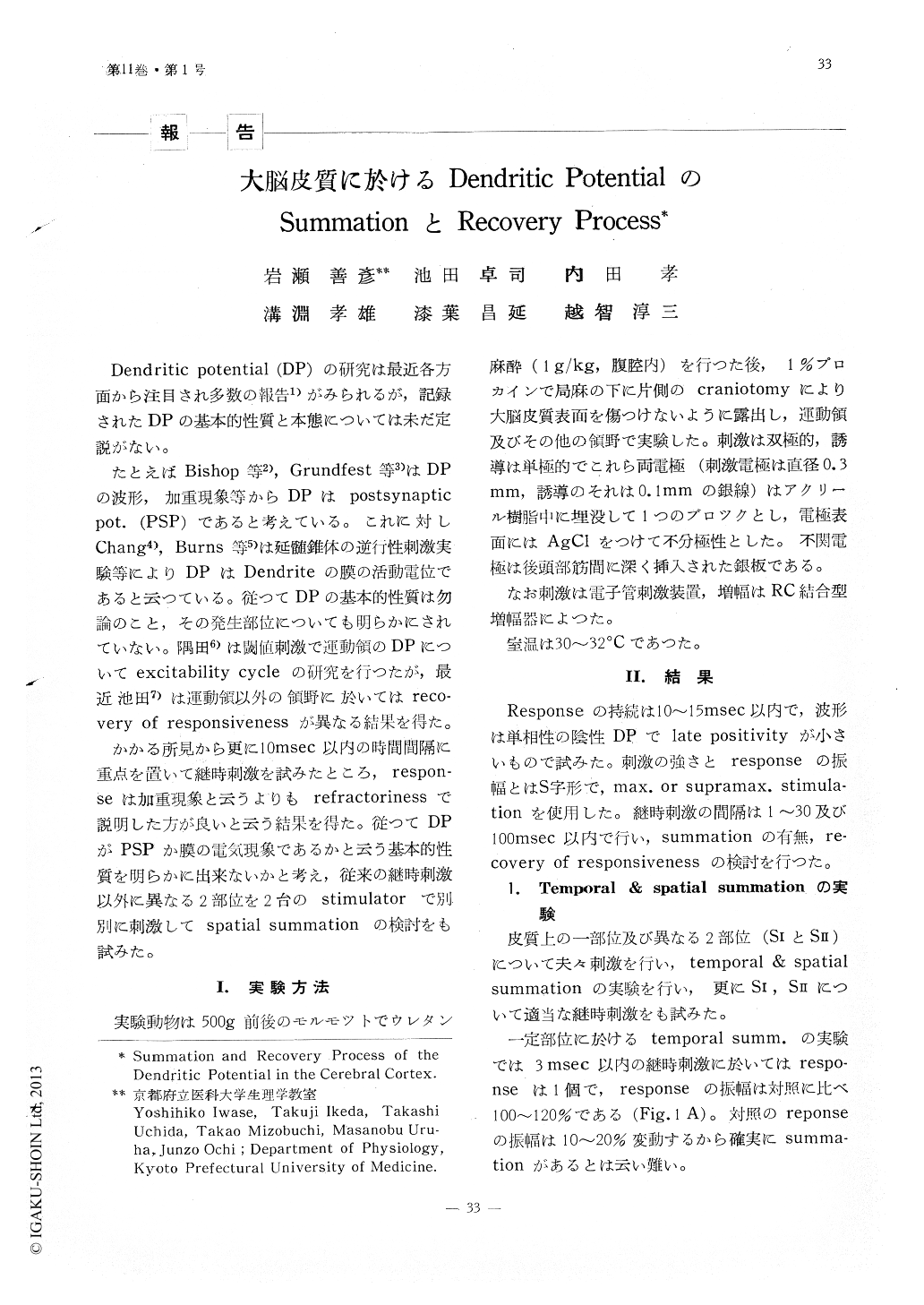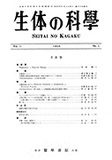Japanese
English
- 有料閲覧
- Abstract 文献概要
- 1ページ目 Look Inside
Dendritic potential(DP)の研究は最近各方面から注目され多数の報告1)がみられるが,記録されたDPの基本的性質と本態については未だ定説がない。
たとえばBishop等2),Grundfest等3)はDPの波形,加重現象等からDPはpostsynaptic pot.(PSP)であると考えている。これに対しChang4),Burns等5)は延髄錐体の逆行性刺激実験等によりDPはDendriteの膜の活動電位であると云つている。従つてDPの基本的性質は勿論のこと,その発生部位についても明らかにされていない。隅田6)は閾値刺激で運動領のDPについてexcitability cycleの研究を行つたが,最近池田7)は運動領以外の領野に於いてはrecovery of responsivenessが異なる結果を得た。
The direct cortical response (DCR) or the dendritic potential (DP) was studied by twin stimuli method in order to examine the summation effect and the recovery process of the response in the cerebral cortex of guinea pig and rabbit, and following results were obtained.
With maximal twin stimuli the summation of DP was scarecely observed unlike in the other pure synaptic events all over the areas tested. Experiment on the spatial summation in which two stimuli were delivered at different positions respectively also showed the same feature. Therefore summation effect seen with twin stimuli of medium or weak strength implies that the effect like this does not depend on the numbers of element to be involved in the response.
On the other hand, in the recovery process second response begins to appear after the peak of first one and takes gradual increase with increasing interval of both stimuli. It needs 15~20msec. to recover fully to the control size after first stimulus, namely the inhibitory period lasts 20msec.
These observations give an impression about the nature of the dendritic potential socalled as follows; DCR is not the postsynaptic potential as stated by the other investigators and most parts of the response is based upon depolarization of the membrane of excitable elements probably including dendrites and axons endued with refractoriness.

Copyright © 1960, THE ICHIRO KANEHARA FOUNDATION. All rights reserved.


